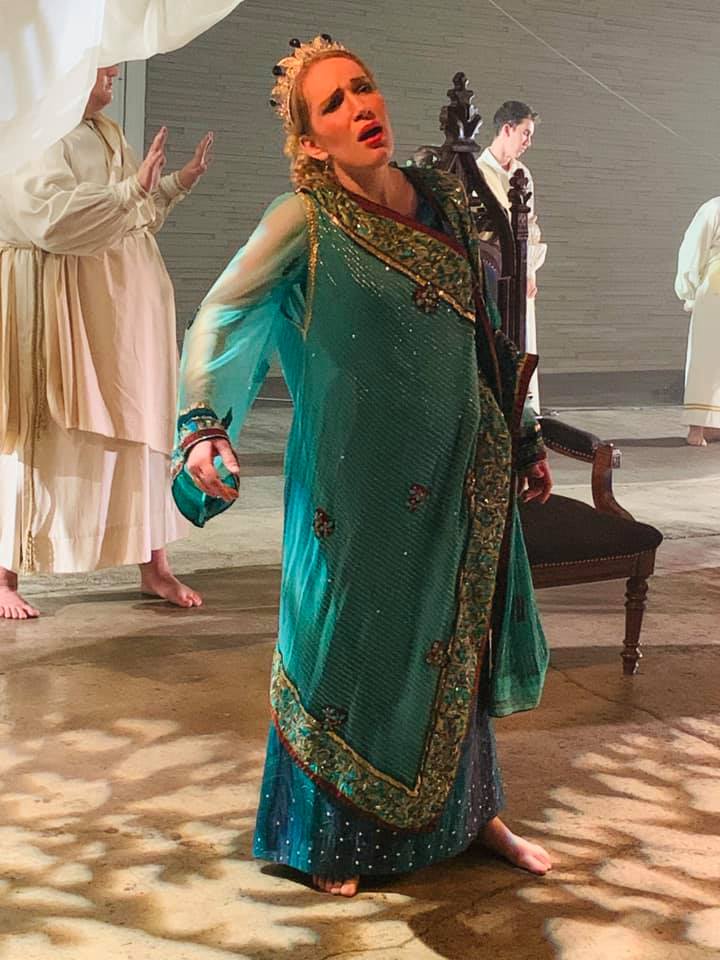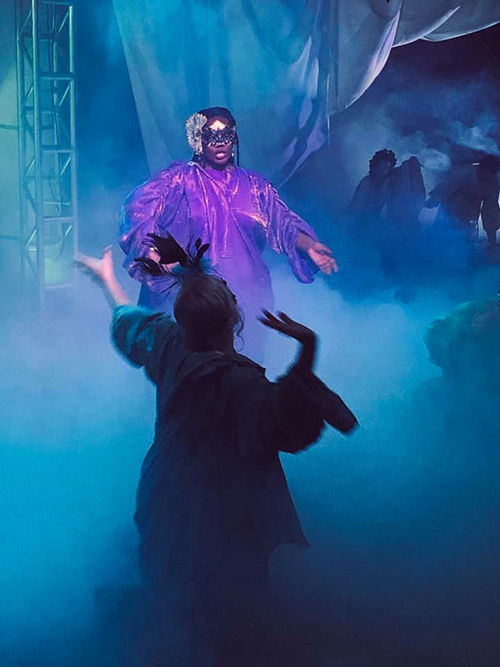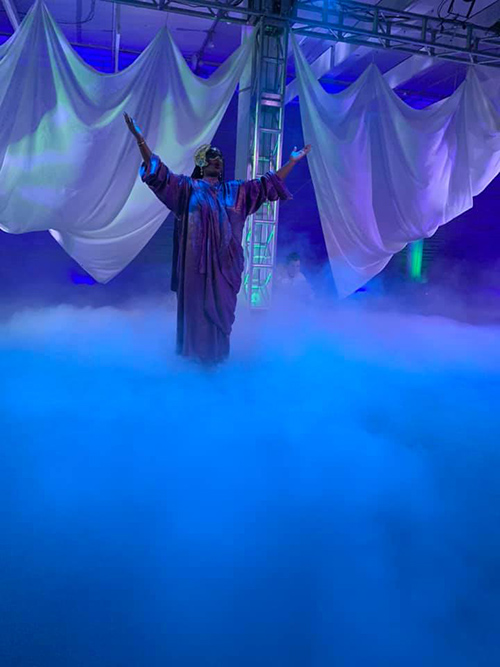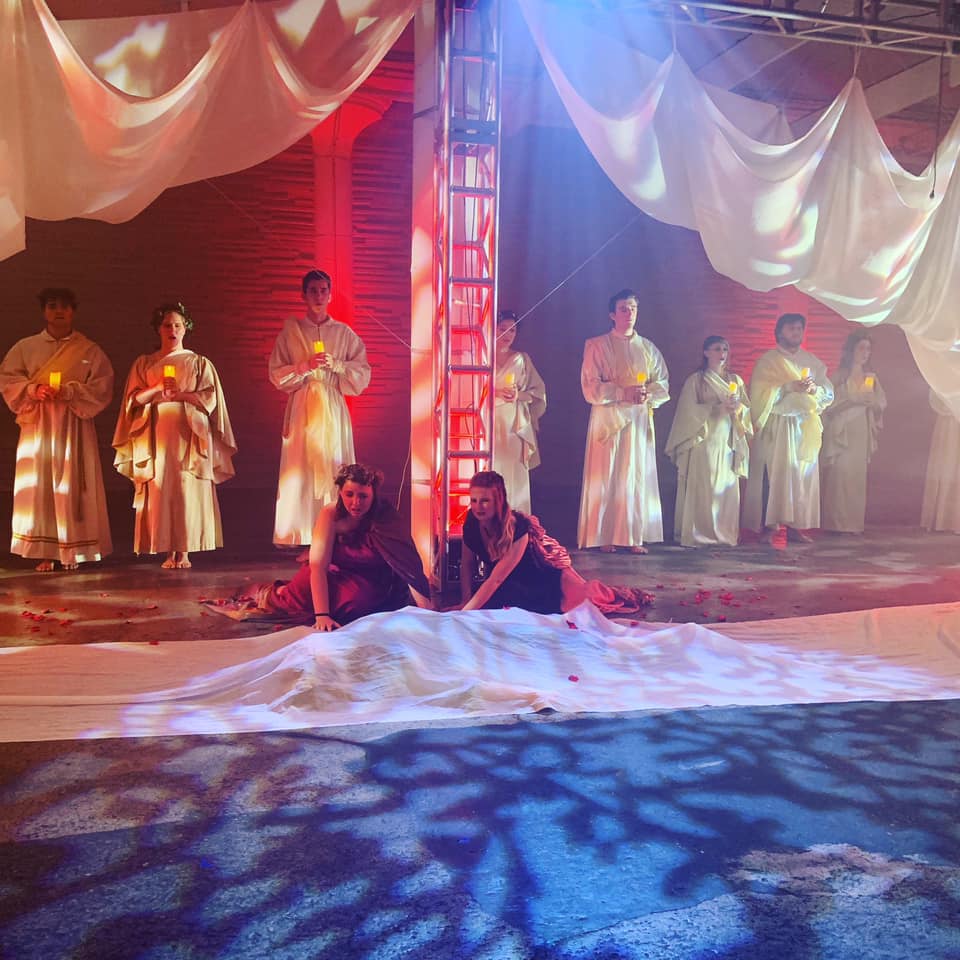by David Kulma

The large room was mostly draped off by curtains, as was the impromptu proscenium. The audience was seated in three terraced rows in a wide-angled V with the orchestra at center. Under the direction of Jason Aquila, the ensemble played stylishly and delightfully. It was all light and proper. The acoustic was surprisingly good and all the music was clearly audible, but the words themselves were often difficult to understand, even within a few yards of the singers. It would have been nice to have had the benefit of supertitles.



Frady’s major change was how the Queen of Carthage dies. Dido was prevented from stabbing herself before her famous aria, and after its affecting sadness had a very realistic panic attack — audible panting and all. That would have been powerful theater in a thoroughly modernized production of Dido, but in the context of mythical high tragedy it simply threw a bucket of cold water on the proceedings.

In the end, producing opera at RED Space with the students of Baldwin Wallace worked with moving results, proving that Dido and Aeneas remains a powerful theater piece wherever staged.
Published on ClevelandClassical.com November 6, 2019.
Click here for a printable copy of this article



